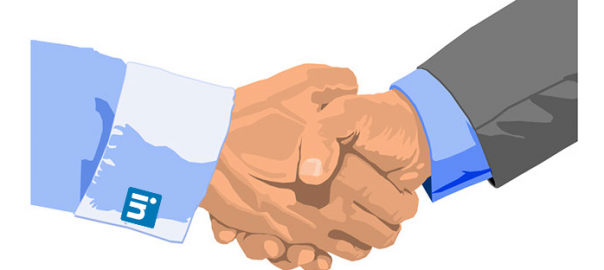
It seems the adage from Greek philosopher Heraclitus has firmly come home to roost at LinkedIn:
Everything changes and nothing stands still.
The quote is probably better known in its modern version:
The only thing that’s constant is change.
LinkedIn members are already settling into the additions and changes in the Messenger platform. Now, we’ve learned that the business-networking giant is changing, adding and subtracting all kinds of features in its Groups.
If you’ve never seen the LinkedIn Groups area or have never really explored it, there’s a lot of features and strategies that you can use in Social Selling. Simply put, though, LinkedIn Groups is an online “place” for business professionals to share content, find answers, post/view jobs, make business contacts, and establish themselves as industry experts.
What’s Changing
There’s been quite a bit of tweaking and changing to Groups. A lot of those alterations are for the people who run Groups; as such, I won’t detail those in this article.
Several changes have been made to the “user” (Groups members) side, too:
- Two Group Types. Once upon a time (a week or two ago), the different types and permutations of Groups were a bit confusing. Now, just two Group types now exist:- Unlisted Groups, which don’t show up in search results. Also, the individual Group owners can invite members to the group.
– Standard Groups, which do show up in search results and any member can invite any of their 1st-degree connections to join. Also, when a member requests to join a Standard Group, their connections in the Group can approve the request. Of course, Group owners and managers can still approve memberships into their Standard Groups.
(In other words, the old “public” Groups are no more, and the old “private” Groups are now “standard” Groups.)
- ALL Groups are now “private.” One used to be able to click into what were known as public Groups to read their conversations prior to joining. Now, discussions are hidden until a LinkedIn member joins a particular Group.
- ALL Groups are now “members only.” To join a Group, you now need to either be invited to the Group or approved by the Group’s owner(s). Previously, you could join certain types of Groups and start contributing immediately.
- The bar for content moderation is a bit lower. Once you’re “in” a Group, any content you post now gets automatically posted. Group owners can still remove content and place members into moderation, though. Other Group members can flag content and comments as being inappropriate. Don’t take the “lower bar” statement as a license to spam or post lower-quality content, though. You will get busted by a Group owner/manager or a Group member.
- Mentions in Group conversations. In the same way you can mention other members in Status Updates and comments to LinkedIn Publishing posts, you can now reference other Group members and bring them into a conversation by typing “@” followed by the Group member’s name.
- Other features include improved content filtering, the removal of the Promotions tab and Subgroups, and the ability to post images in Conversations.
If you’d like to see all of the changes to Groups, or you want to read about LinkedIn’s reasoning behind its decision making, the company has provided thishandy list.
What All of This Means

As someone who worked for a company that launched a socially powered professional networking platform, I understand LinkedIn’s desire to improve continuously its user experience the best it can be for its members. As a user of such platforms, though, I also get how “change” can affect members’ feelings towards the platform. Sometimes it’s good; other times, not so much.
For those of us who use Social Selling to increase our leads and sales, the new Groups platform offers both challenges and opportunities.
Perhaps the biggest problem is getting in on these conversations in the first place. I understand that Groups were starting to become more than a bit unwieldy and even spammy… especially the public ones. Some kind of quality control was needed.
Nuking public Groups was a good move. I can also see the logic in making standard Groups private, too. I’m not so sure about unlisted Groups, though. I wonder if the proverbial pendulum is now swinging a bit too far in the other direction, especially when it comes to in completely hiding unlisted Groups from public searches. I hate to use the old cliche “only time will tell,” but it applies in this case.
One of the better places to be, Group-wise, is in one that was private before the change, and is now unlisted. At least now the standard for new people to join that particular Group is much, much higher. The opportunity to build your brand will be much better in this particular situation.
A big opportunity exists, though, with Groups. With the tighter controls on the Group owner side, it is more advantageous than ever to open and own your own Group in the area (industry-wise and/or geography-wise) into which you sell your goods or services. This topic is definitely worth an entire article of its own, though, and I’ll have one next week.
As with anything, change can be scary. But if you embrace it and figure out how to use it to your advantage, change can bring opportunity. And opportunity does exist in the new LinkedIn Groups.
This article was originally published on LinkedIn.
Digital & Social Articles on Business 2 Community(97)
Report Post








